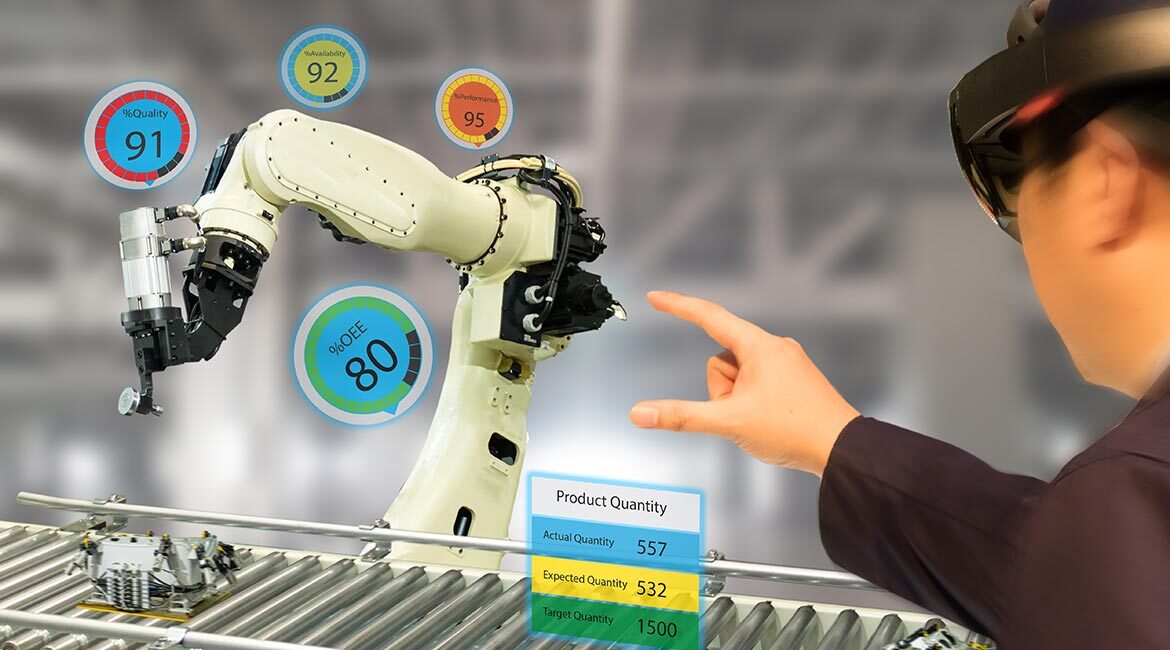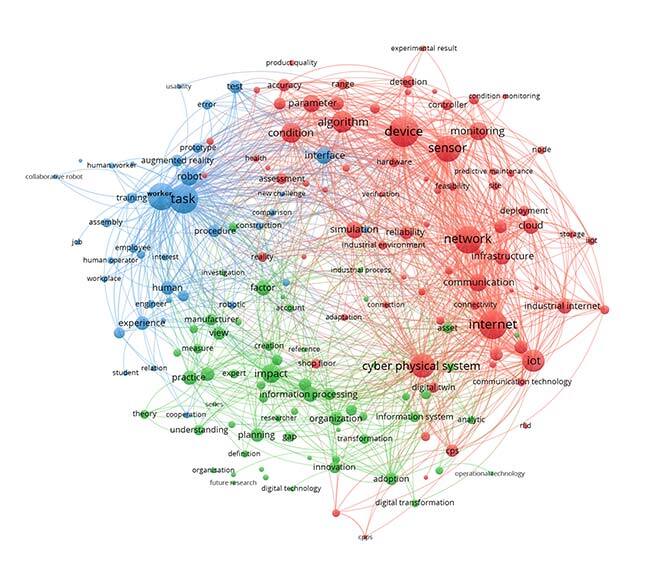The Future in Manufacturing—The Rise of Operator 4.0

Purchased on Istock.com. Copyright.
Industrial robotics has accelerated automation in manufacturing since the second half of the 20th century. More recently, Industry 4.0 has brought automation to the next level. Within this context, human work will undergo an important transformation, but complex assembly will continue to need human skills. We are presenting the concept of Operator 4.0, defined shortly as a worker being supported by several technologies in the execution of his or her tasks. Main documented trends and technologies in relation to this new concept are explored.
The Evolution of Manufacturing Processes
During the late 19th and early 20th centuries, several technological advances drove the industrialization of society in various countries. These advances included electrification, petrochemical development, rail transport expansion, and advances in the metallurgical industry, among many others. In the manufacturing sector, a major paradigm shift was in the making—the birth of mass production. In this vein, Henry Ford was a pioneer and promoter of mass production. His main contribution was the introduction of assembly lines as the central axis of the automobile manufacturing process, while implementing standardization as a fundamental principle of production (Alizon, Shooter, & Simpson, 2009). In practical terms, an assembly line consists of an industrial arrangement of machines, equipment, and workers for a continuous flow of workpieces (TEoEB, 2018). Henry Ford’s idea was to significantly reduce production costs by increasing productivity—more units produced per time unit.
Modern Automation and the Emergence of Operator 4.0

Figure 1. Collaborative robot technology used in the electronic industry.
Assembly lines and manufacturing in general have greatly evolved since Henry Ford pioneered these new concepts in the early 20th century. This type of production organization spread to a wide range of sectors outside the automotive industry. Furthermore, the development of industrial robotics has led to a significant increase in automation and customization levels since the second half of the 20th century. Industry 4.0 is moving automation to the next level, introducing several digital technologies—the Internet of Things (IoT), Artificial Intelligence (AI) and Big Data, among others. However, despite the strong trend on automation, manual work is still an economically viable option, particularly in some contexts where a high level of complexity and variety in production is present. Many products are still assembled by hand. This is the case, for example, in the aerospace industry, where products are among the most complex (Amir & Weiss, 2019). Although the proportion of monotonous and repetitive tasks will probably continue to decline as a consequence of automation, we can expect that even within Industry 4.0, complex manual assembly will still need the human skill set. Different technologies are promising to support workers in the execution of their tasks without replacing the workers.
According to Romero et al. (2016), support can be provided to assist workers in both the physical and cognitive aspects of their work. Some examples of these technologies are collaborative robots, augmented reality, exoskeletons, and biometric tracking systems, among others. All of this has led to the introduction of the Operator 4.0 concept (Mattsson, Fast-Berglund, Li, & Thorvald, 2018; Peruzzini, Grandi, & Pellicciari, 2018; Romero et al., 2018; Romero et al., 2016). Operator 4.0 is “understood as a smart and skilled operator who performs not only cooperative work with robots but also work aided by machines as and if needed by means of human cyber-physical systems (…).” According to Nadeau and Landau (2018), implementing these technologies to support humans in manufacturing is considered a major competitive advantage but also represents major challenges—investment costs, compatibility, physical and mental workload, safety, and acceptability.
What Literature Says about Human Work in an Industry 4.0 Context
In a recent paper, Torres and Nadeau (2020) conducted a literature review focused on how the worker/human notion has been dealt with in Industry 4.0. The research covered 10 years coinciding approximately with the introduction of the Industry 4.0 concept. They identified the main focuses, and some trends in the evolution of the body of knowledge. In total, 1469 references from INSPEC and Compendex were analyzed using VosViewer, a tool used to construct and visualize scientific publication networks. The authors identified three major areas of interest, represented by different colours on Figure 2. These areas in order of importance are:
Technological infrastructure: including the development of networks, devices, sensors and algorithms, among others, as part of the Internet of Things (IoT) and Cyber Physical Systems (CPS) (in red).
Worker performance: the evaluation and study of worker performance in terms of tasks, procedures, and training as well as human experience and interfaces (in blue).
Adoption and integration: covering factors in the process of adoption and integration of these new technologies, as well as impacts on the organization including innovation and deployment in real settings (in green).

Figure 2. Network visualization of terms contained in the 1469 bibliographic reference (Torres and Nadeau, 2020).
While an important number of technologies has been associated with the concept of Operator 4.0 (exoskeletons, wearable trackers, virtual reality, augmented reality, intelligent assistants and collaborative robots, among others) only two technologies stand out from the documented literature: augmented reality and human-robot collaborations.
Conclusion
Within the context of Industry 4.0, human work will undergo important transformations. Along with the development of the necessary technological infrastructure for this transformation, worker performance and the adoption and integration of these new technologies are important areas of research. Augmented reality and human-robot collaboration seem to be the two main technologies studied in literature in relation to Operator 4.0.
Additional Information
For more information on this research, please read the following conference paper:
Torres Medina, Yaniel et Nadeau, Sylvie. 2020. “Operator 4.0 in manufacturing: trends, potential technologies and future perspectives”. In Frühjahrskongress der Gesellschaft für Arbeitswissenschaft (Berlin, Germany, March 16-18, 2020) Coll. “Kongress der Gesellschaft für Arbeitswissenschaft”, vol. 66. Dortmund: GfA-Press.


